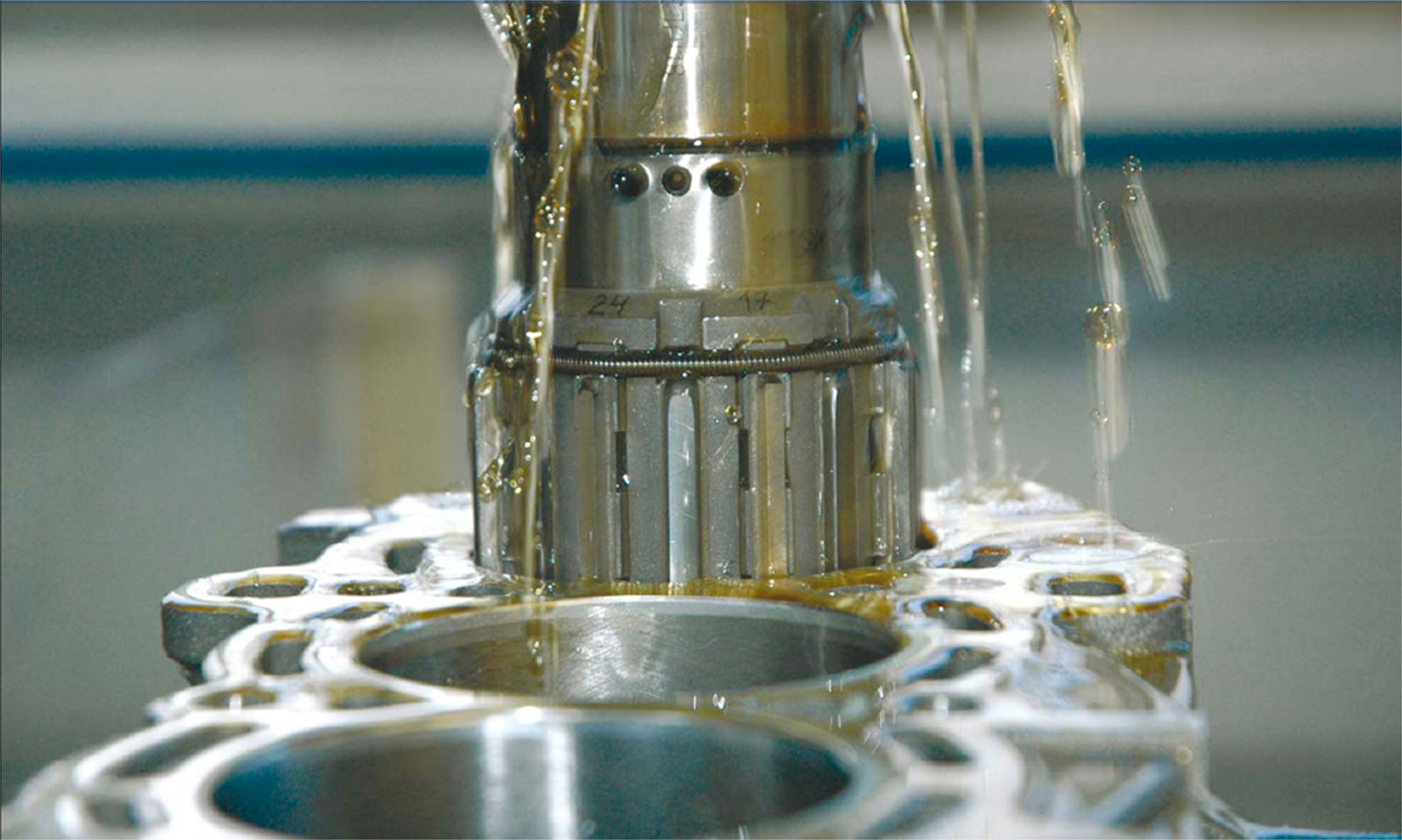Using less gas and oil to get where you’re going
A quick pit-stop at the gas station is enough to put a good dent in your wallet. New technology is set to lower the high cost of filling up your car, by enabling combustion engines to consume two to three percent less gas and significantly less oil, while eliminating a step in engine production.
An engine without oil will not survive for very long. Pistons need plenty of lubricant in order to be able to move within the cylindrical sleeves in the engine block. Two things are known to raise the resultant level of friction. The first is attributed to distortion of the cylindrical bore hole when the cylinder head is attached, which is known as static distortion. The second occurs when the engine is running and temperatures warp the bore hole. The extent of this thermal distortion depends on prevailing engine temperatures and the specific engine model. In reality, the piston does not follow a perfectly smooth up and down motion, but instead touches at points within the bore hole. This results in the engine requiring a great deal more oil as well as more gas. Automakers are already able to compensate static distortion. During the final machining stage, honing, technicians mount a honing liner to the engine which simulates the cylinder head that will later be mounted. Only then the work on the bore hole is completed. Thermal distortion, on the other hand, presents difficulties since it has not been possible to compensate for this effect until now.
Saving two to three percent of fuel
This problem has now been solved by researchers at the Fraunhofer Institute for Machine Tools and Forming Technology IWU in collaboration with a car manufacturer and a machine tool producer. “Our technology makes it possible to compensate for both static and thermal distortion. This can lead to a fuel saving of two to three percent in combustion engines, and remove one step in their production,” says IWU head of department André Bucht. This clever technology is based on a tool that can adapt its own shape. Researchers start by working out how an engine block is likely to become distorted: they determine the level of static distortion by unscrewing the cylinder head and measuring the extent to which the bore hole has been warped. They then simulate thermal distortion that occurs in each engine series, using an operating temperature of 90 degrees Celsius as their reference. The honing tool adjusts its shape based on these calculations, thereby altering the profile of the bore hole so that motions of the piston are perfectly smooth later on when the engine is running, preventing excessive friction. Researchers have integrated small Piezo actuators into the tool which alter its shape and expand the diameter as required. “This is how we can incorporate any ‘imperfections’ in the otherwise perfectly round shape of the finished bore hole,” says Bucht.
A prototype of the tool already exists. The researchers have put it to use to prove that they can achieve the surface accuracy required without slowing down production – there being no more than 20 to 30 seconds for the assembly of each engine. Research is currently being performed on the test rig in collaboration with auto manufacturers. This is where an engine produced using the tool is put through its paces. Researchers are examining to what extent piston friction and fuel consumption are reduced, and how the lifespan of the engine might be affected in comparison with engines manufactured using conventional tools . The tests are scheduled to be completed by the end of the year. Researchers then plan to design the tool and the production process so that they can be adopted by manufacturers.
